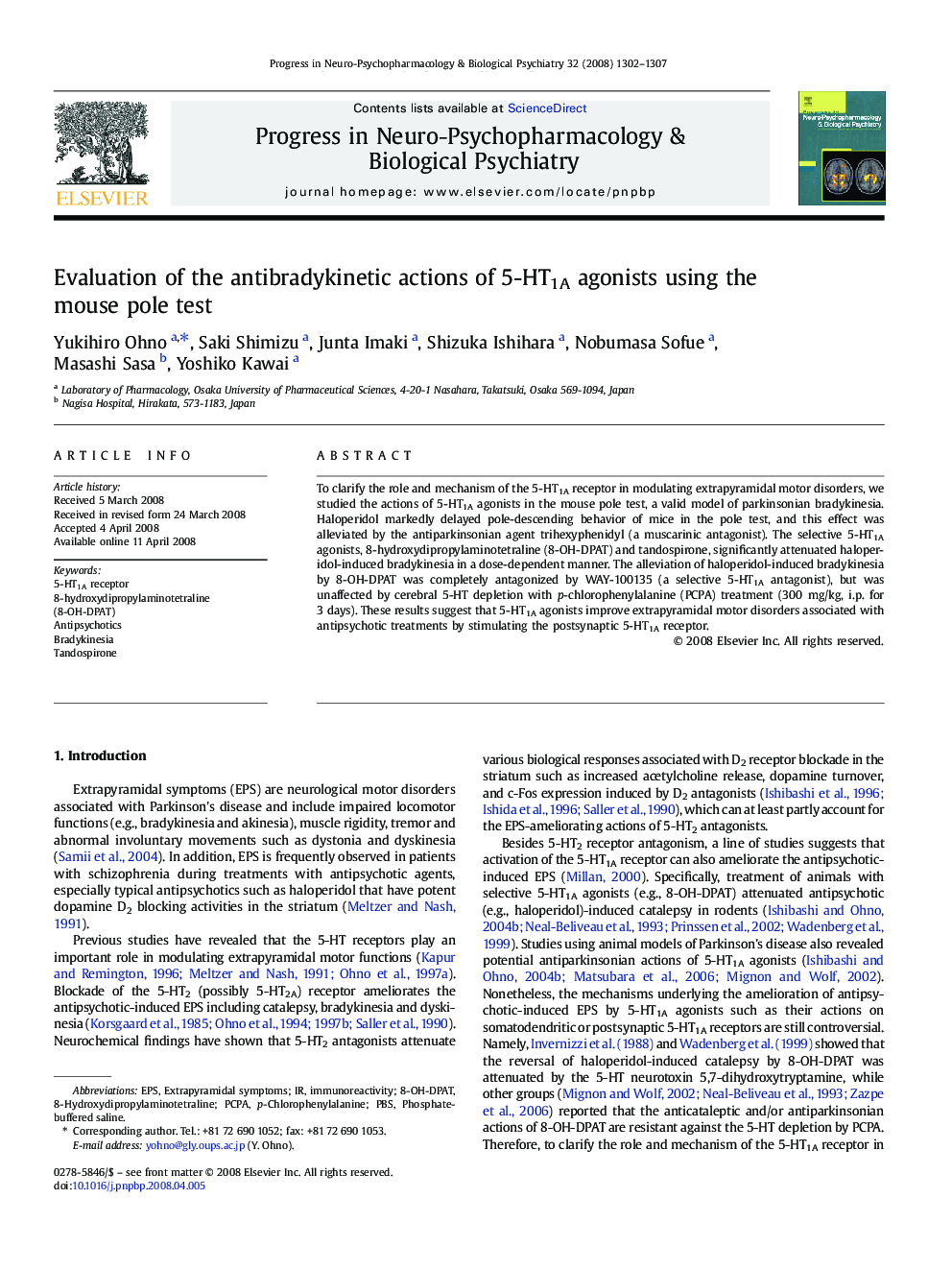| Article ID | Journal | Published Year | Pages | File Type |
|---|---|---|---|---|
| 2566597 | Progress in Neuro-Psychopharmacology and Biological Psychiatry | 2008 | 6 Pages |
To clarify the role and mechanism of the 5-HT1A receptor in modulating extrapyramidal motor disorders, we studied the actions of 5-HT1A agonists in the mouse pole test, a valid model of parkinsonian bradykinesia. Haloperidol markedly delayed pole-descending behavior of mice in the pole test, and this effect was alleviated by the antiparkinsonian agent trihexyphenidyl (a muscarinic antagonist). The selective 5-HT1A agonists, 8-hydroxydipropylaminotetraline (8-OH-DPAT) and tandospirone, significantly attenuated haloperidol-induced bradykinesia in a dose-dependent manner. The alleviation of haloperidol-induced bradykinesia by 8-OH-DPAT was completely antagonized by WAY-100135 (a selective 5-HT1A antagonist), but was unaffected by cerebral 5-HT depletion with p-chlorophenylalanine (PCPA) treatment (300 mg/kg, i.p. for 3 days). These results suggest that 5-HT1A agonists improve extrapyramidal motor disorders associated with antipsychotic treatments by stimulating the postsynaptic 5-HT1A receptor.
